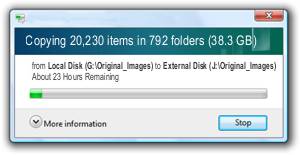Windows™.
Sheesh.
Gmail has been nagging me.
“You are using an old browser which will soon be unsupported. Upgrade to a modern browser, such as Google Chrome.”
Rats. !@#$%^. Growl.
I “upgraded” Internet Exploder, Microsoft’s flagship browser, from version 9 to version 11 last night. Had to leave the Patio Stone running overnight because, after 20 minutes, it still had not shut down. It took 10 minutes extra to boot up while it “configured your updates” (I’m thinking it downloaded and installed every nonessential patch I’ve thus far successfully ignored) this morning.
So far, my desktop clock gadget it missing and won’t reinstall. I don’t know what else became FUBAR. There is a forum post about “Windows 7 gadgets disappear or display incorrectly after IE 11 upgrade.”
Windows 7 is the most prevalent operating system on computers around the world.
Apparently Microsoft tested IE 11 on Windows 7 at the standard screen resolution (only) and it works fine. Microsoft forgot many of us have set the display to medium (125%) or large (150%) fonts because we have high resolution big screens.
IE screws up everything but standard screen resolutions.
When the clock disappeared, I tried adding it again and again. Each of the clocks was actually there but was just not displayed.
The core fix is to change the screen font size to the default value. While that makes the gadgets appear again in the right location and without display issues, “it may also reduce the usability of the system.” Ya think? Alternatively, you can hack Windows.
!@#$%^ Microsoft.
I.E. looks marginally crisper.
“Why does Microsoft call the clock a gadget?” Liz Arden wondered. “Everyone else refers to little helpers like this as ‘widgets’.”
Ooo ooo! I know. Why not make up a word?
I started at the beginning of the alphabet and tried bidget, bodget, and budget but those didn’t work. We need a word that identifies the source (Microsoft) as well as how will the widget works.
Microsoft could call it a cludget!
By the way? I now have a battery operated clock on my desk again.



